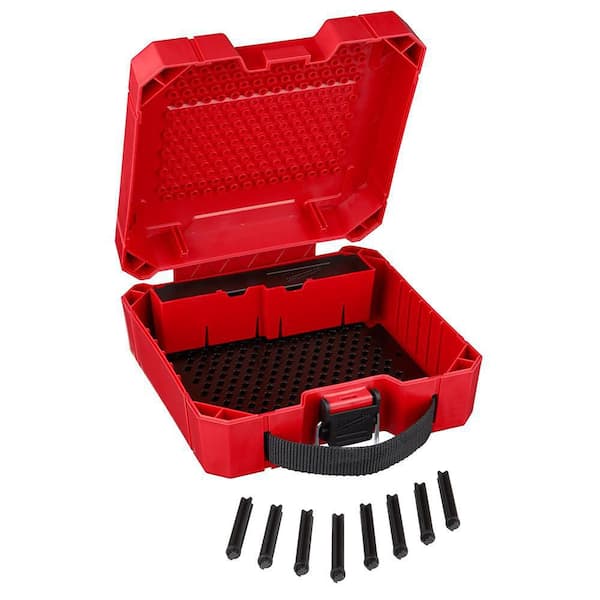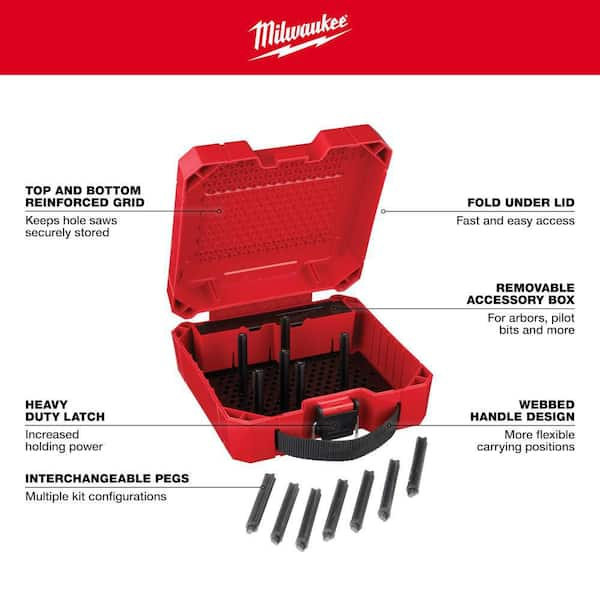Ergonomic Design Considerations for Truck Bed Tool Boxes
Ergonomic design considerations for truck bed tool boxes include ease of access and storage efficiency. These aspects ensure optimal functionality and user satisfaction, making tasks more manageable and enhancing productivity.
When designing tool boxes for trucks, factors such as accessibility, weight distribution, and durability play a pivotal role in ensuring user comfort and safety. By focusing on these key elements, manufacturers can create solutions that meet the unique needs of truck owners and promote a seamless working environment.
Implementing ergonomic principles in the design process not only enhances usability but also contributes to a smoother workflow and enhanced performance. Truck bed tool boxes that prioritize ergonomics provide a practical and efficient storage solution for professionals and enthusiasts alike, improving overall work quality and user experience.

Credit: www.amazon.com
1. Importance Of Ergonomic Design
When it comes to truck bed tool boxes, ergonomic design is of utmost importance for ensuring efficiency and safety. Ergonomic design focuses on creating products that are comfortable and efficient for human use, ultimately leading to improved productivity and reduced risk of injury.
1.1 Increased Productivity
Ergonomically designed truck bed tool boxes contribute to increased productivity by providing quick and easy access to tools and equipment. With well-planned storage compartments and accessible features, workers can save time and effort when retrieving and organizing tools, leading to smoother workflow and enhanced efficiency.
1.2 Reduced Risk Of Injury
Ergonomic design plays a vital role in reducing the risk of injury among workers. By incorporating features such as easy-grip handles, smooth drawer operation, and proper weight distribution, ergonomic tool boxes minimize physical strain and the likelihood of accidents. This not only safeguards the well-being of workers but also contributes to a safer and more secure work environment overall.
2. Key Factors In Ergonomic Design
Key factors in ergonomic design for truck bed tool boxes include proper height and reachability to minimize strain, durable and non-slip materials for safety, and organized storage options for easy access to tools. Considerations at the design stage can greatly enhance the functionality and user experience of these essential truck accessories.
2.1 Accessibility And Ease Of Use
Truck bed tool boxes should be easily accessible and user-friendly.
- Height: Ensure the box height is convenient for reaching tools.
- Opening Mechanism: Opt for mechanisms that are easy to operate.
- Visibility: Consider clear labeling for quick tool identification.
2.2 Weight Distribution
Evenly distribute weight to prevent strain and imbalance while accessing tools.
| Tool Category | Location in the Box |
|---|---|
| Heavy Tools | Place at the bottom, closer to the truck bed. |
| Light Tools | Store on top or in accessible compartments. |
2.3 Ergonomic Handles
Easy-to-grip handles are essential for comfortable tool box handling.
- Anti-Slip: Opt for handles with anti-slip features for a secure grip.
- Comfort: Ensure handles are ergonomically designed for reduced strain.
- Size: Choose handles that fit well in the user’s hand.
3. Considerations For Storage Organization
Efficient storage organization is essential for maximizing the functionality of truck bed tool boxes. Here are key considerations to optimize the storage layout:
3.1 Adjustable Dividers
Adjustable dividers allow for customizable compartments to accommodate tools of varying sizes, keeping them neatly organized and easily accessible.
3.2 Labeling System
A labeling system helps users quickly identify the contents of each section, reducing search time and enhancing overall efficiency.
3.3 Drawer Layout
The drawer layout of the tool box should be ergonomic, ensuring that each drawer is strategically placed for easy access to tools without cluttering the space.
4. Material Selection For Durability And Comfort
When it comes to truck bed tool boxes, the material selection is a crucial consideration for ensuring both durability and comfort. The choice of materials not only impacts the longevity of the tool box but also influences the user’s experience in handling and accessing tools. Let’s explore the key aspects of material selection for truck bed tool boxes.
4.1 Lightweight And Sturdy Materials
Selecting lightweight yet sturdy materials for truck bed tool boxes is essential to ensure ease of handling and installation. Aluminum alloys and high-grade plastics are popular choices due to their combination of strength and relatively low weight. This ensures that the tool box is durable without adding unnecessary bulk to the vehicle.
4.2 Non-slip Surfaces
Incorporating non-slip surfaces within the tool box design is paramount to prevent tools and equipment from shifting during transportation. Utilizing materials with a textured surface or incorporating non-slip liners can enhance the overall safety and security of stored items, minimizing potential damage or hazards while on the move.
4.3 Shock Absorption
Implementing shock-absorbing materials or features within the tool box construction can mitigate the impact of vibrations and movements during transit. By incorporating materials with shock-absorbing properties or utilizing cushioning elements, such as foam inserts, the tool box can protect its contents from potential damage due to road vibrations and rough terrain.
5. Future Trends And Innovations In Ergonomic Design
Discover the evolving trends in ergonomic design for truck bed tool boxes. Innovations focus on enhancing usability and safety, with considerations for user comfort and efficiency. Future designs aim to seamlessly integrate technology and sustainability for optimized performance and user experience.
As the demand for more efficient and user-friendly truck bed tool boxes continues to grow, manufacturers are continually innovating to meet the changing needs of their customers. In this section, we will explore two exciting future trends and innovations in ergonomic design that are revolutionizing the industry: Smart Technology Integration and Enhanced Safety Features.5.1 Smart Technology Integration
Smart technology has become an integral part of our daily lives, and its integration into truck bed tool boxes is no exception. With the use of sensors, connectivity, and intuitive interfaces, these innovative tool boxes are taking convenience and functionality to a whole new level. Consider the following ways in which smart technology is transforming truck bed tool boxes:- Remote Control: Imagine being able to open, close, or lock your tool box from your smartphone, saving you time and effort.
- GPS Tracking: Smart tool boxes equipped with GPS technology allow you to track the location of your tools, ensuring their safety and preventing loss.
- Inventory Management: Smart tool boxes can keep track of the tools and equipment inside, providing real-time inventory updates and alerts when something is missing.
- Weather Monitoring: Some tool boxes integrate weather sensors to provide you with real-time updates on temperature, humidity, and other weather conditions that could affect your tools.
5.2 Enhanced Safety Features
Safety is of utmost importance when it comes to handling tools and equipment, especially in the transportation industry. Truck bed tool boxes are now being designed with enhanced safety features to protect both the user and the tools they carry. Check out these notable safety features that are shaping the future of ergonomic tool box design:- Anti-Theft Systems: Manufacturers are incorporating advanced locking mechanisms, biometric sensors, and secure encryptions to prevent unauthorized access and deter theft.
- Anti-Slip Surfaces: Tool boxes now come with specially designed surfaces to reduce the risk of tools sliding around during transportation, preventing accidents and damage to valuable equipment.
- LED Lighting: Increased visibility inside the tool box is crucial for safety and efficiency. LED lighting integrated into tool boxes illuminates the interior, making it easier to locate tools in low-light conditions.
- Shock Absorption: To protect delicate tools from damage during transit, tool boxes are being designed with shock-absorbing materials and cushioning systems.

Credit: www.homedepot.com

Credit: www.homedepot.com
Frequently Asked Questions For Ergonomic Design Considerations For Truck Bed Tool Boxes
How Can I Make My Truck Tool Box More Secure?
To increase security of your truck tool box, use heavy-duty locks, install a tamper-proof latch, and park in well-lit areas. Additionally, consider adding a security cable or alarm system for added protection. Regularly check for wear and tear on the box to prevent vulnerabilities.
What Should I Put Between Toolbox And Truck Bed?
You can place a truck bed mat or liner between the toolbox and the truck bed to protect both surfaces.
How Do I Choose A Truck Tool Box?
When choosing a truck tool box, consider the size and type of your truck. Look for durable materials like aluminum or steel, and consider the weather resistance and security features. Think about the storage capacity and the accessibility of the tool box for your needs.
What Is The Toolbox In The Bed Of A Truck Called?
The toolbox in the bed of a truck is called a truck bed toolbox or simply a toolbox. It is used to store and organize tools and other items for easy access and security.
Conclusion
Considering ergonomic design for truck bed tool boxes is crucial for optimizing functionality and user experience. Implementing features such as easy access, sturdy construction, and secure locking mechanisms can significantly enhance efficiency and safety. By integrating these considerations into the design process, manufacturers can better cater to the practical needs of truck owners.
